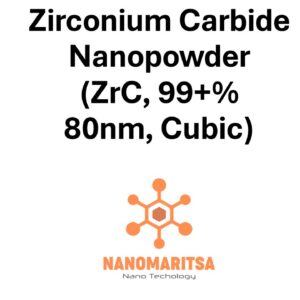Polytetrafluoroethylene (PTFE) Nanopowder (99.9%, 260 nm) is a high-purity, ultra-fine fluoropolymer material known for its exceptional chemical resistance, thermal stability, and low friction. With a nanoscale particle size of 260 nm, this PTFE nanopowder is ideal for enhancing the properties of coatings, composites, lubricants, and advanced manufacturing applications. Its unique combination of properties makes it indispensable in industries such as aerospace, electronics, energy storage, and medical devices.
1. Key Properties
High Purity: With a purity of 99.9%, this PTFE nanopowder ensures minimal contamination, making it suitable for high-performance and sensitive applications.
Nanoscale Particle Size: The 260 nm particle size provides a large surface area, improving dispersion and interaction within composites and coatings.
Exceptional Chemical Resistance: PTFE is highly resistant to almost all chemicals, ensuring durability and reliability in harsh environments.
Thermal Stability: PTFE can withstand high temperatures, maintaining its properties up to 260°C (continuous use) without degradation.
Low Friction Coefficient: Known for its self-lubricating properties, PTFE reduces wear and friction in mechanical and tribological systems.
Hydrophobicity: PTFE is inherently non-wettable, making it suitable for water-repellent coatings and surfaces.
2. Applications
Advanced Coatings: PTFE nanopowder is widely used in coatings for industrial, automotive, and aerospace applications to reduce friction, improve durability, and resist chemicals.
Composites and Polymers: It enhances the mechanical, thermal, and chemical properties of composites, including those used in aerospace, electronics, and structural materials.
Lubricants: As a lubricant additive, PTFE reduces friction and wear in high-performance systems, including automotive engines and machinery.
Energy Storage: PTFE is used in lithium-ion batteries and fuel cells as a binder and separator material, improving thermal stability and chemical resistance.
Electronics: In electronic components, PTFE provides insulation, reduces heat buildup, and enhances reliability under high-frequency conditions.
Medical Devices: The biocompatibility and chemical inertness of PTFE make it suitable for use in medical implants, surgical tools, and protective coatings.
Textiles and Films: PTFE nanopowder is used in creating water-repellent, stain-resistant, and breathable fabrics for outdoor gear and industrial applications.
3. Advantages
Enhanced Material Properties: The nanoscale size of PTFE enhances its dispersion, adhesion, and interaction with other materials, improving performance in composites and coatings.
Thermal and Chemical Resilience: PTFE nanopowder retains its properties under extreme temperatures and exposure to aggressive chemicals, ensuring long-term durability.
Reduced Friction and Wear: Its low friction coefficient makes it an ideal additive for reducing mechanical wear in moving parts and surfaces.
High Compatibility: PTFE can be incorporated into a wide range of materials and systems, offering versatility across industries.
Lightweight and Non-Reactive: The material’s low density and inert nature make it suitable for high-performance and sensitive applications.
4. Recent Trends and Research
Energy Storage Applications: Research is focusing on using PTFE nanopowder to improve the thermal stability and safety of lithium-ion batteries, as well as in fuel cells to enhance durability and efficiency.
Nanocomposite Development: Efforts are underway to integrate PTFE with advanced nanomaterials like graphene and carbon nanotubes for superior mechanical and thermal properties.
Sustainable Manufacturing: PTFE nanopowder is being incorporated into eco-friendly processes and products to improve longevity and reduce environmental impact.
Medical Innovations: Researchers are exploring PTFE’s role in advanced medical devices, including implant coatings and biocompatible surfaces.
Functional Surfaces: Studies are investigating PTFE for superhydrophobic and oleophobic coatings to create self-cleaning and anti-sticking surfaces.
5. Future Prospects
Aerospace and Automotive Expansion: PTFE nanopowder will remain essential in lightweight, durable coatings and composites for reducing fuel consumption and improving wear resistance.
Advanced Energy Solutions: The integration of PTFE in energy storage systems, particularly solid-state batteries and next-generation fuel cells, is expected to grow as these technologies mature.
Medical Applications: PTFE’s biocompatibility will drive its adoption in advanced medical devices and protective surfaces in healthcare.
Nanotechnology Synergies: The combination of PTFE with other nanomaterials will lead to multifunctional composites with tailored properties for cutting-edge applications.
Eco-Friendly Coatings: PTFE’s role in sustainable and high-performance coatings will continue to expand, meeting industrial demands for durability and reduced environmental impact.
Polytetrafluoroethylene (PTFE) Nanopowder (99.9%, 260 nm) offers a unique blend of chemical resistance, thermal stability, and low friction, making it an indispensable material in high-performance and innovative applications across multiple industries. Its versatility and advanced properties ensure its continued importance in driving future technological advancements.
| Measurement (gr) | 100 grams, 500 grams, 1000 grams |
|---|






